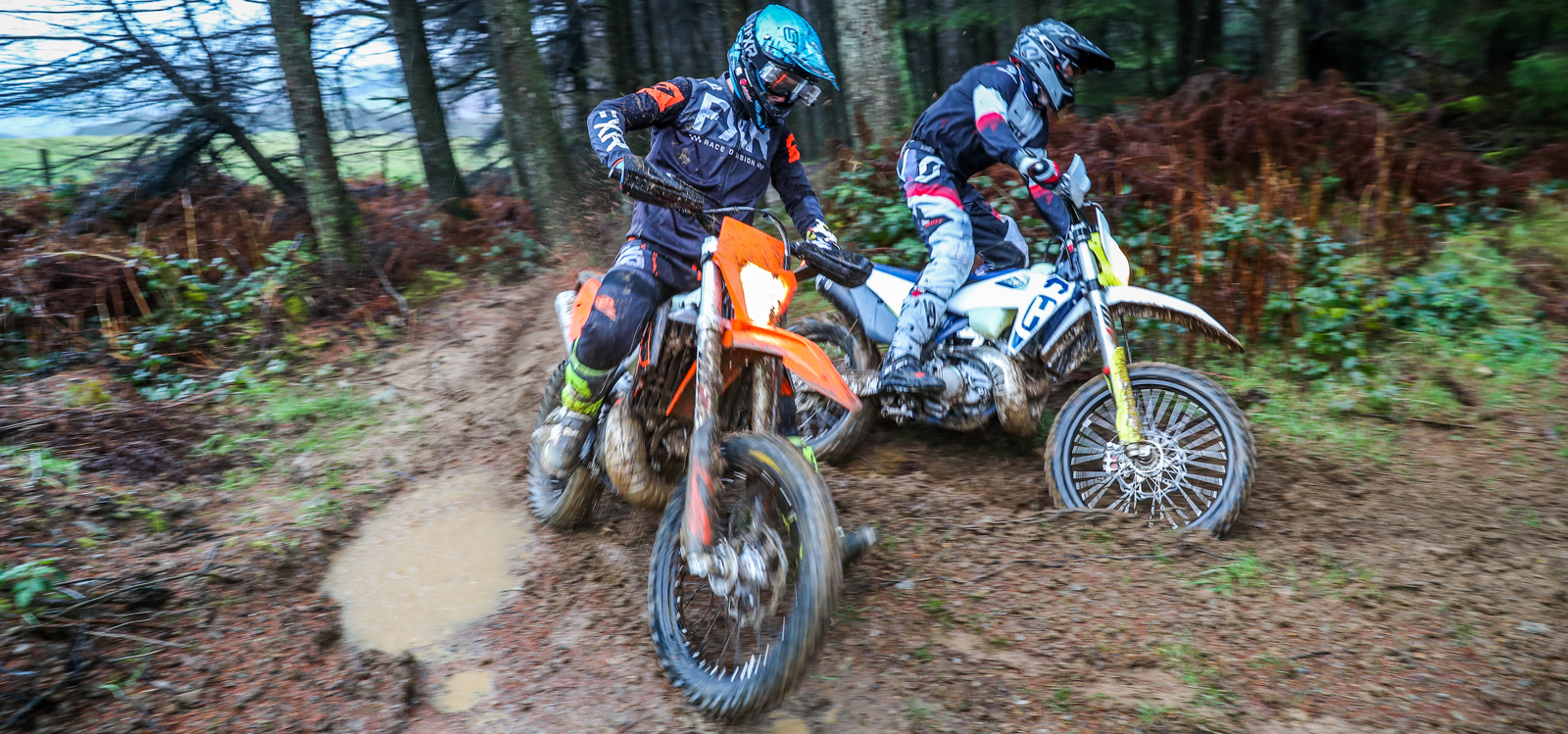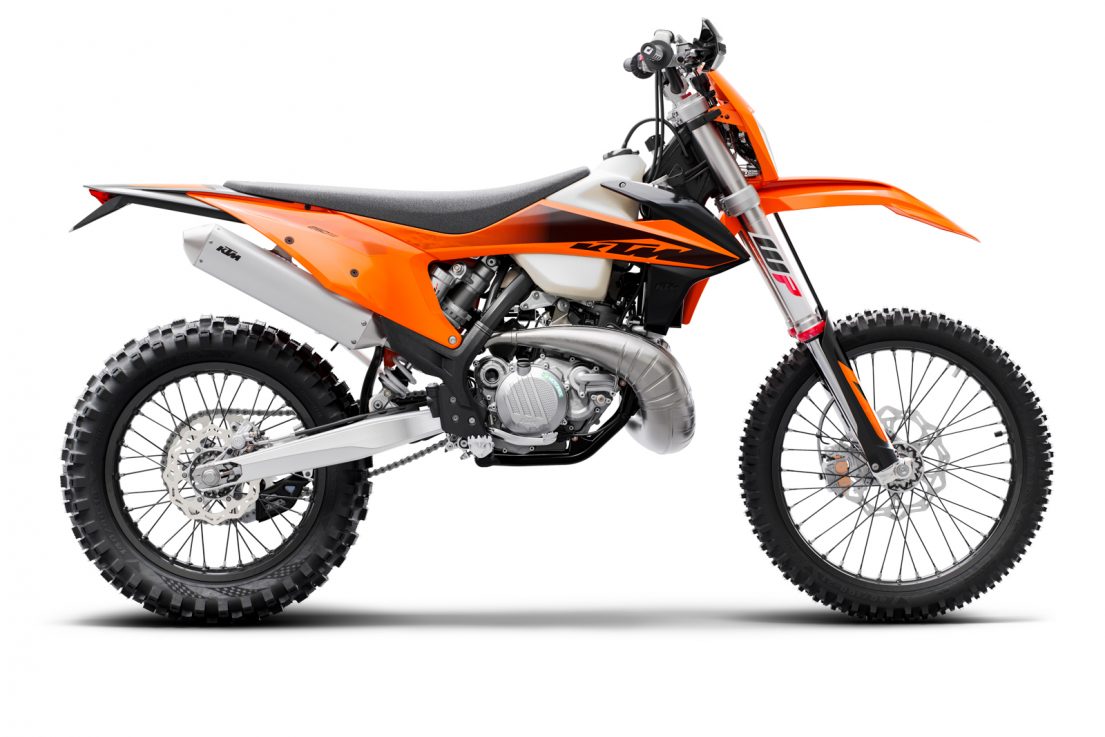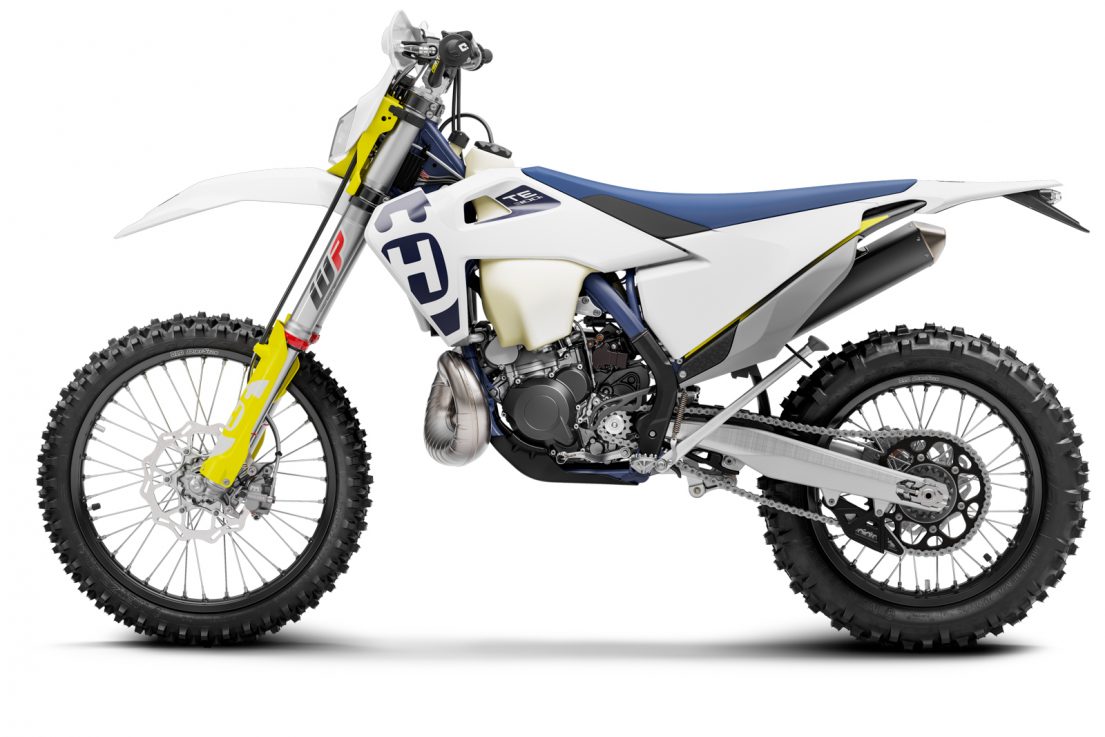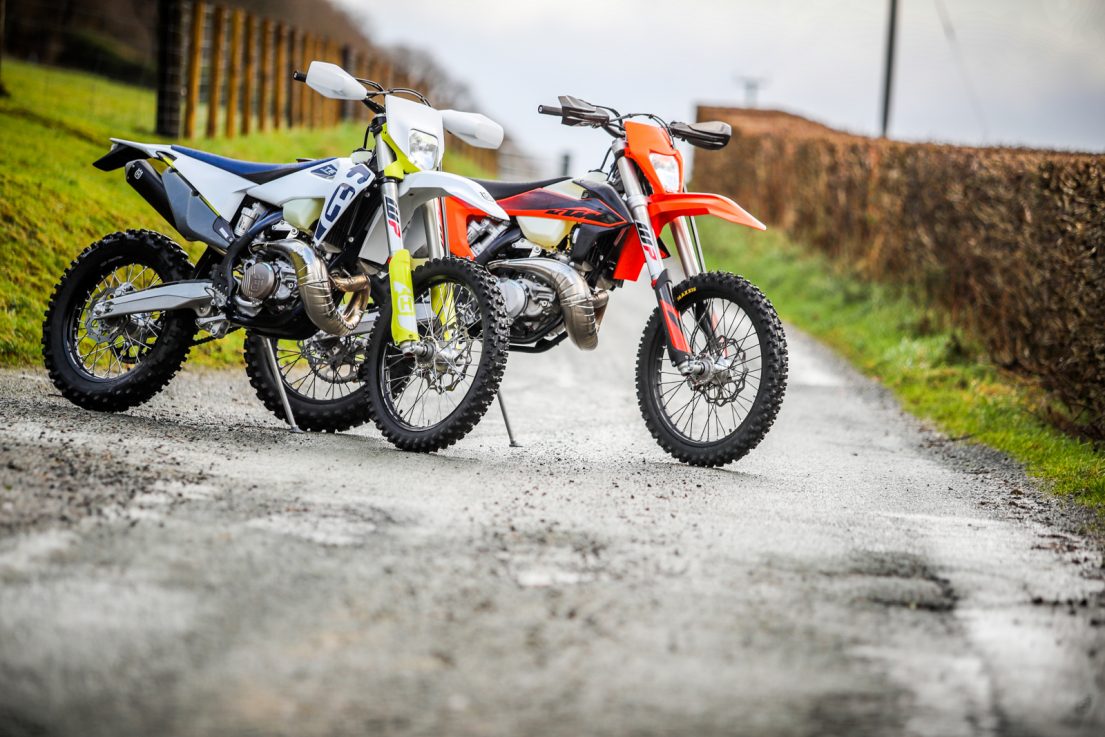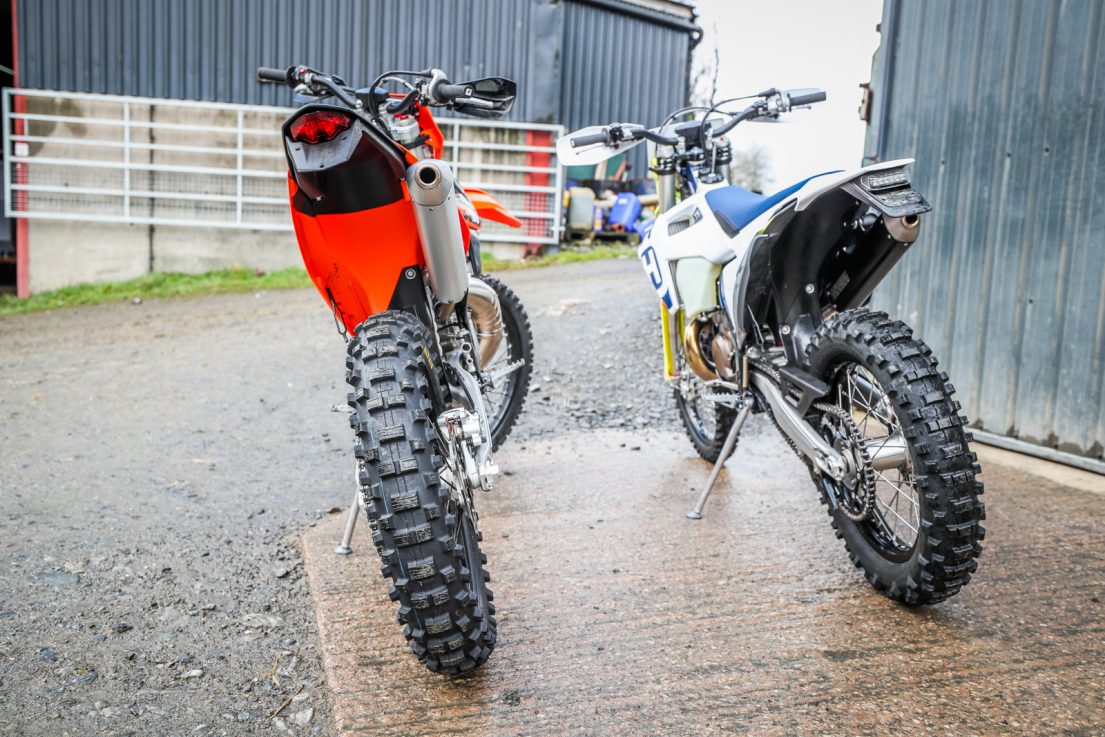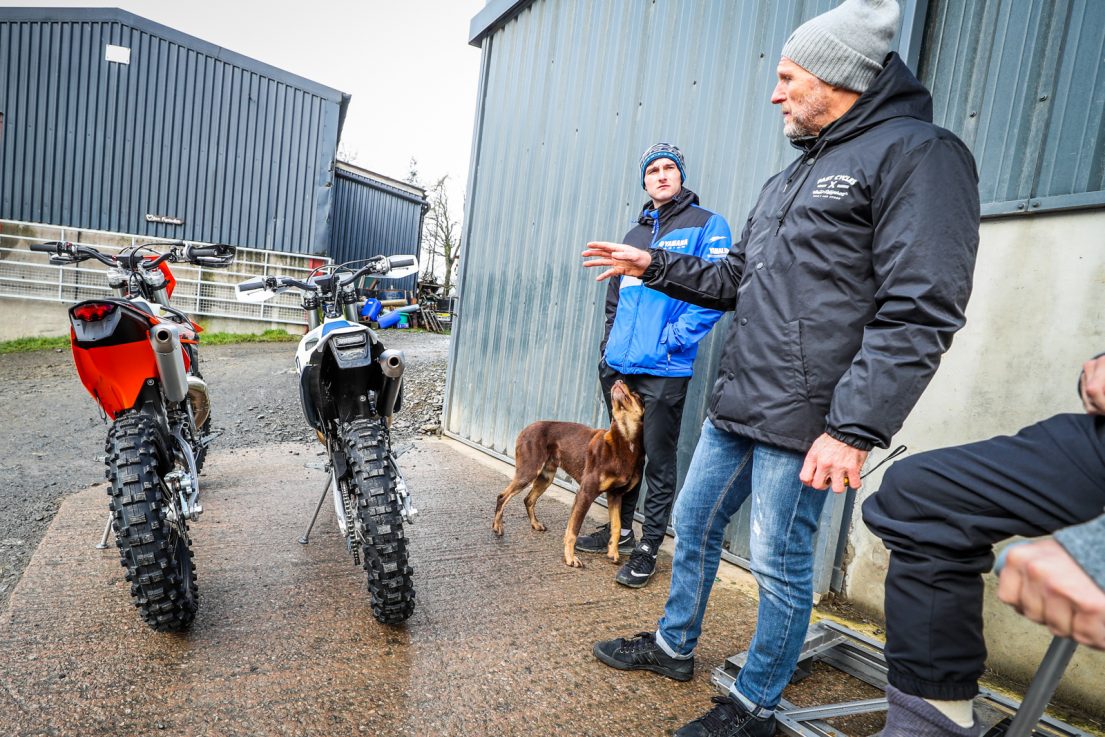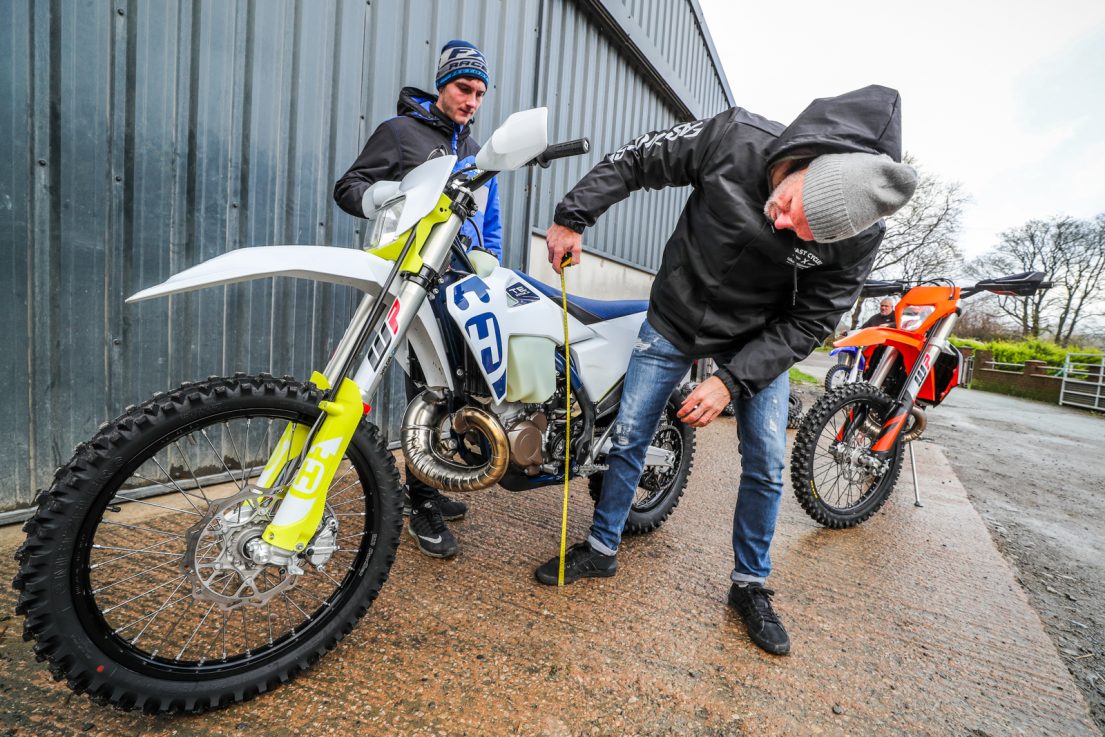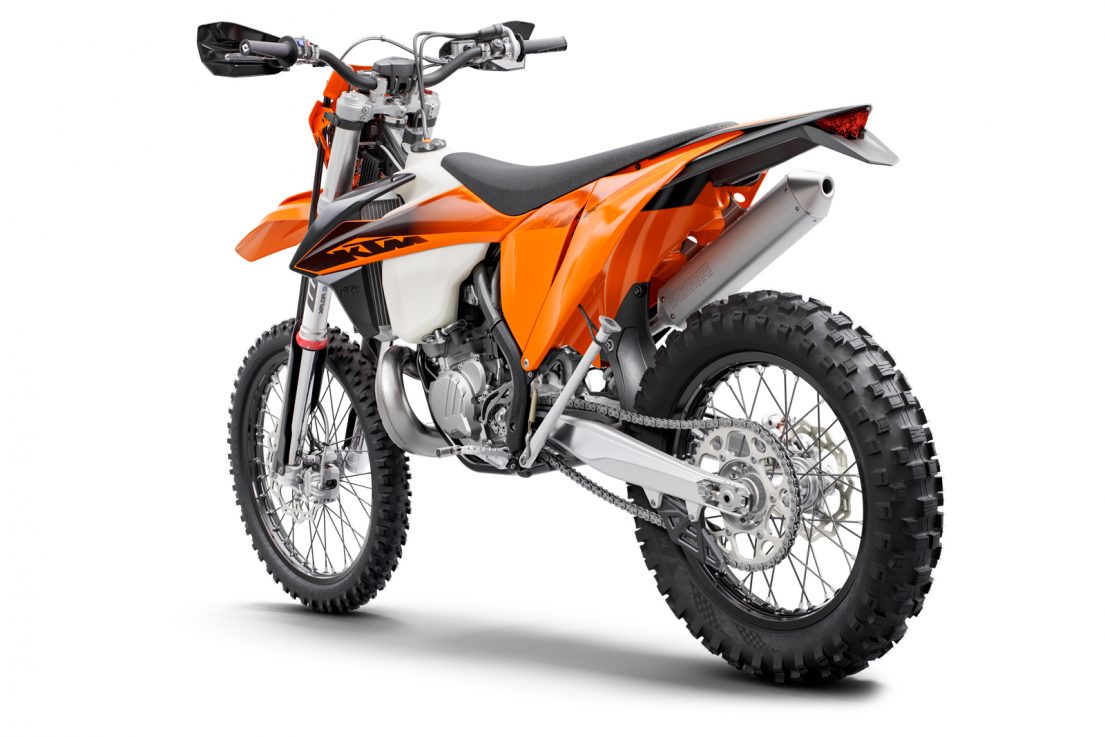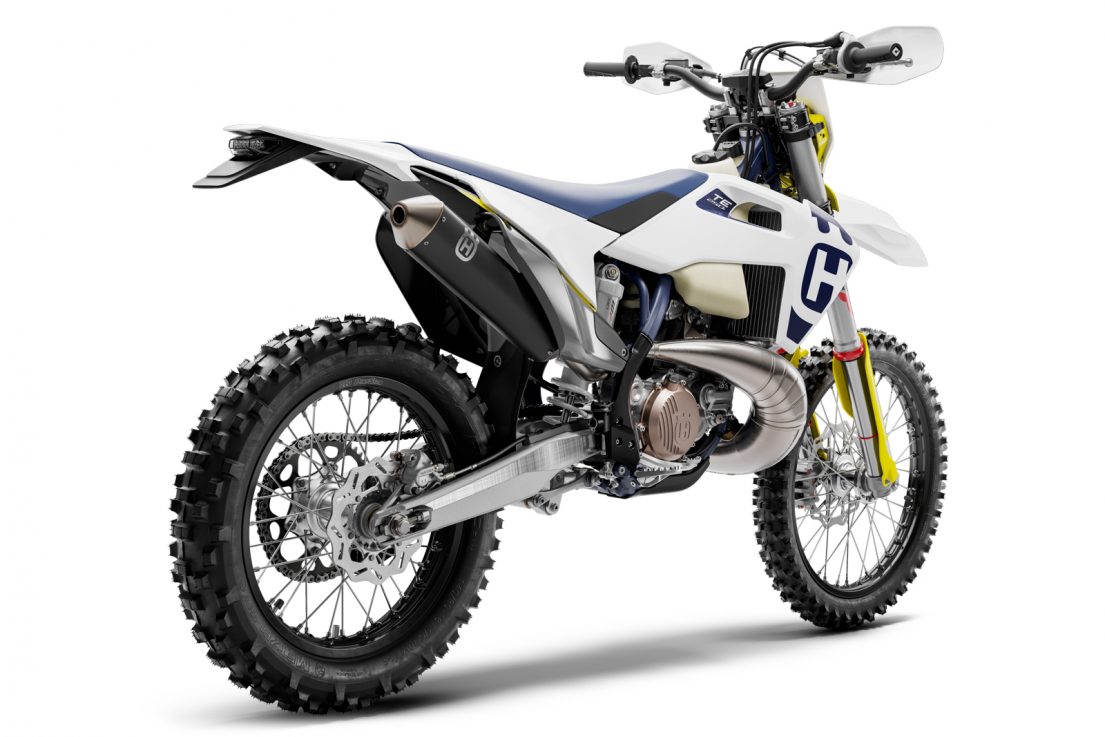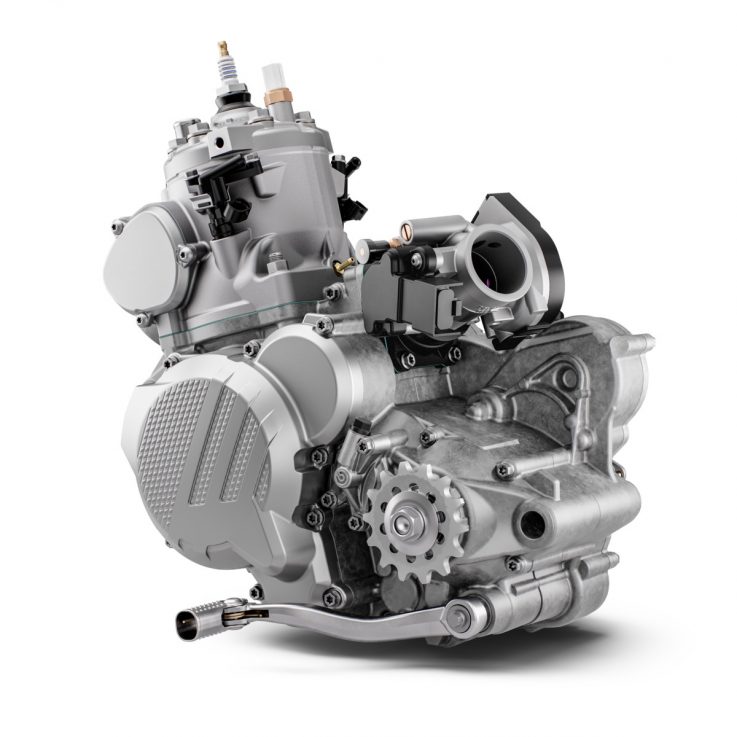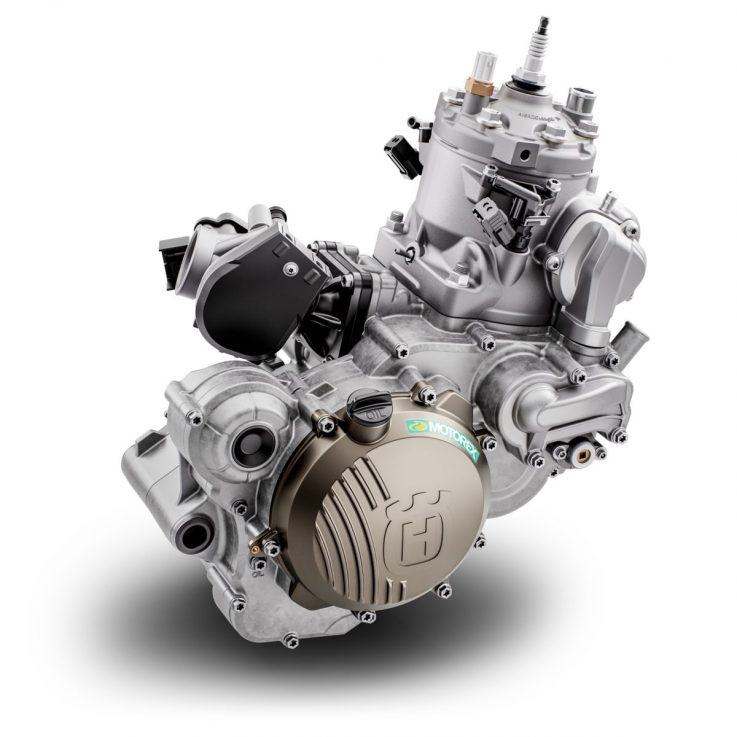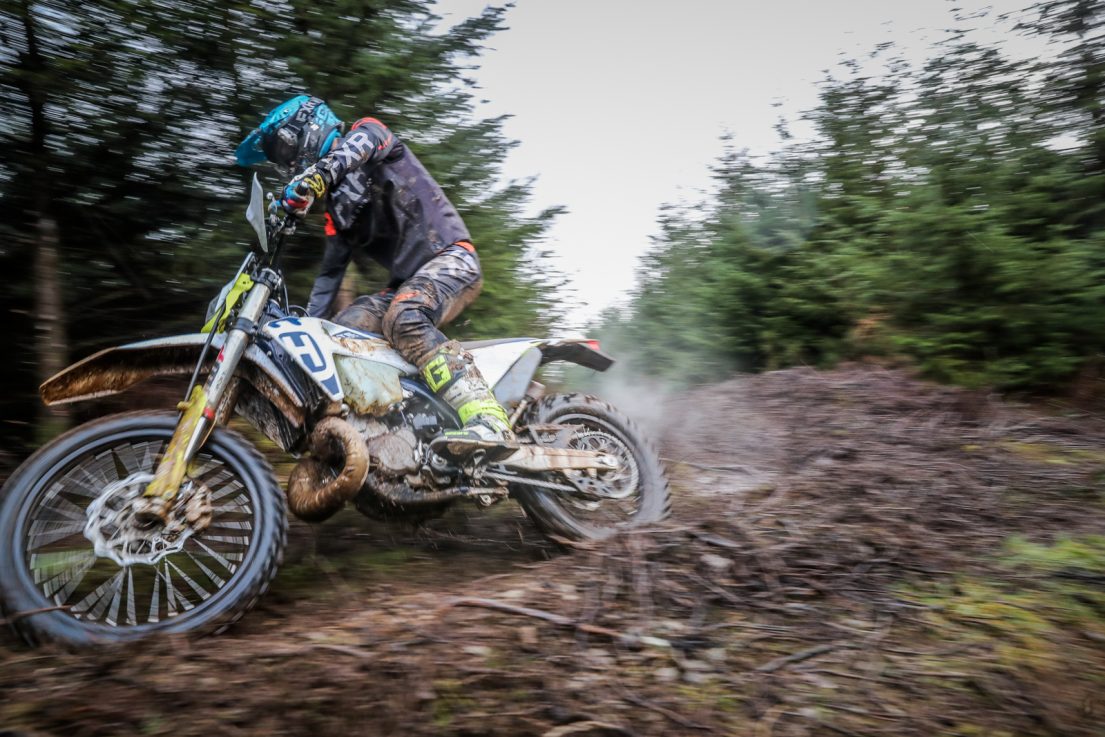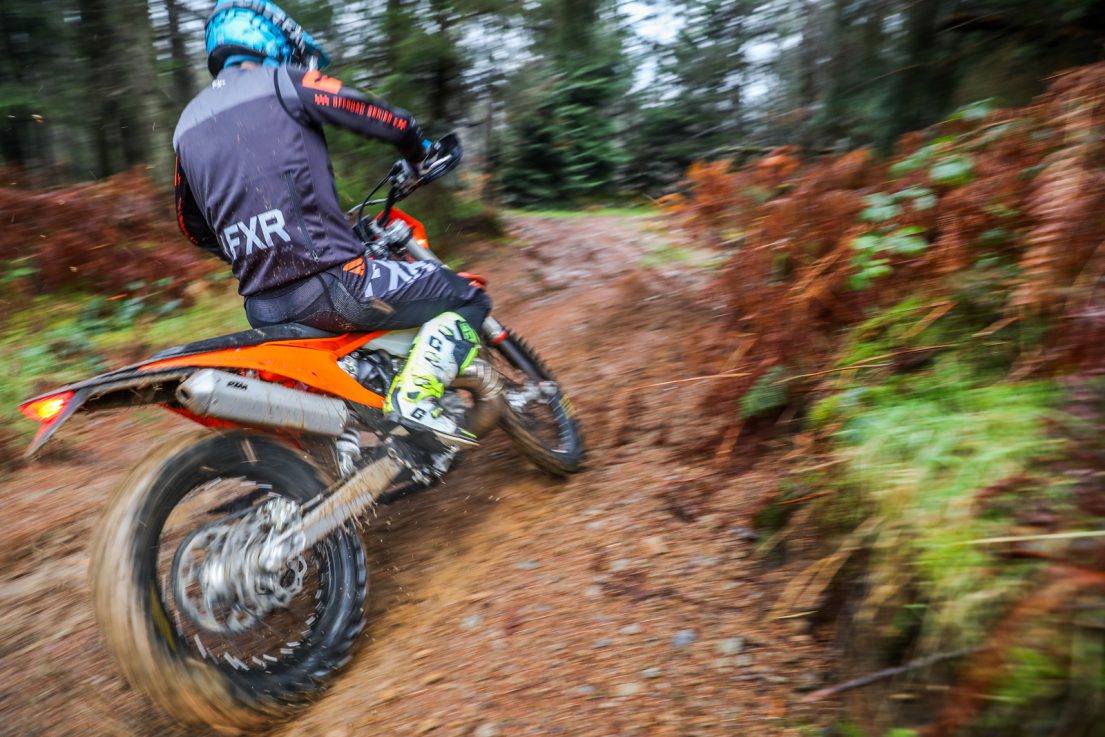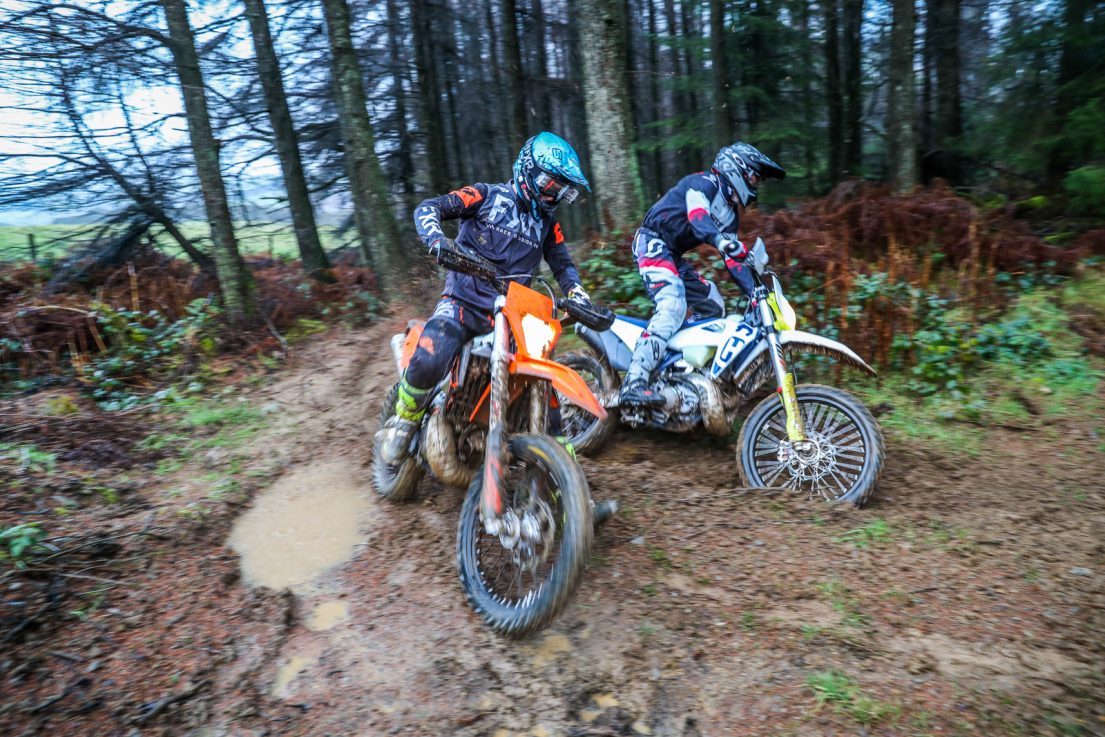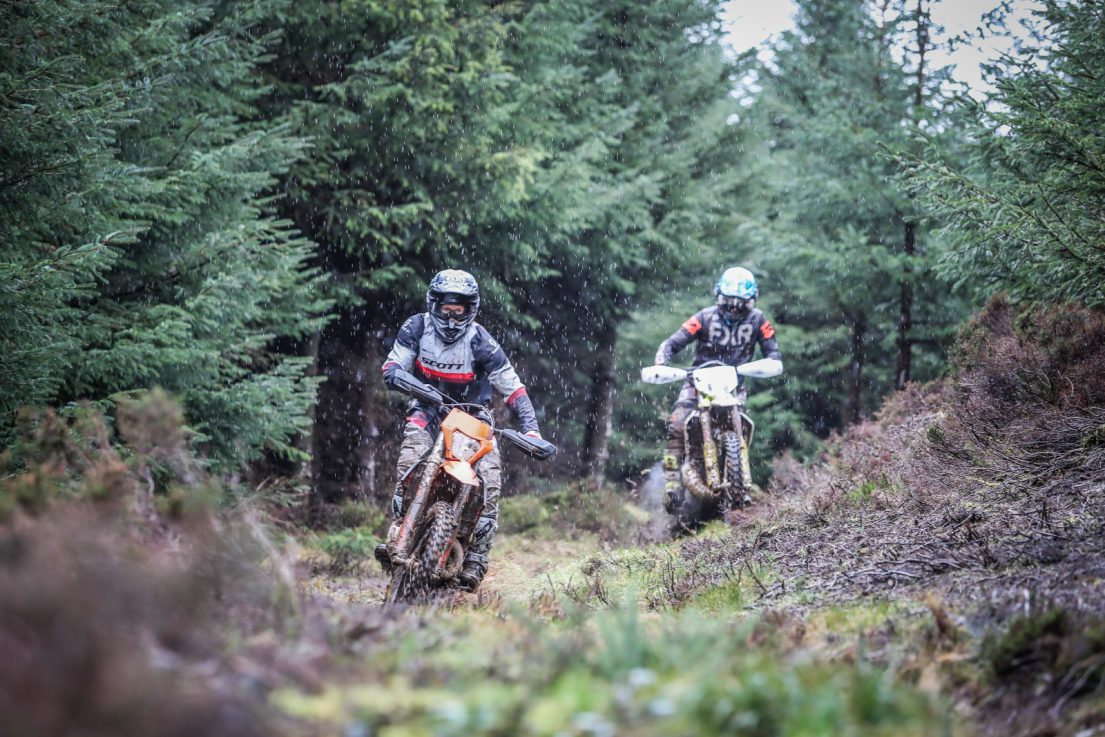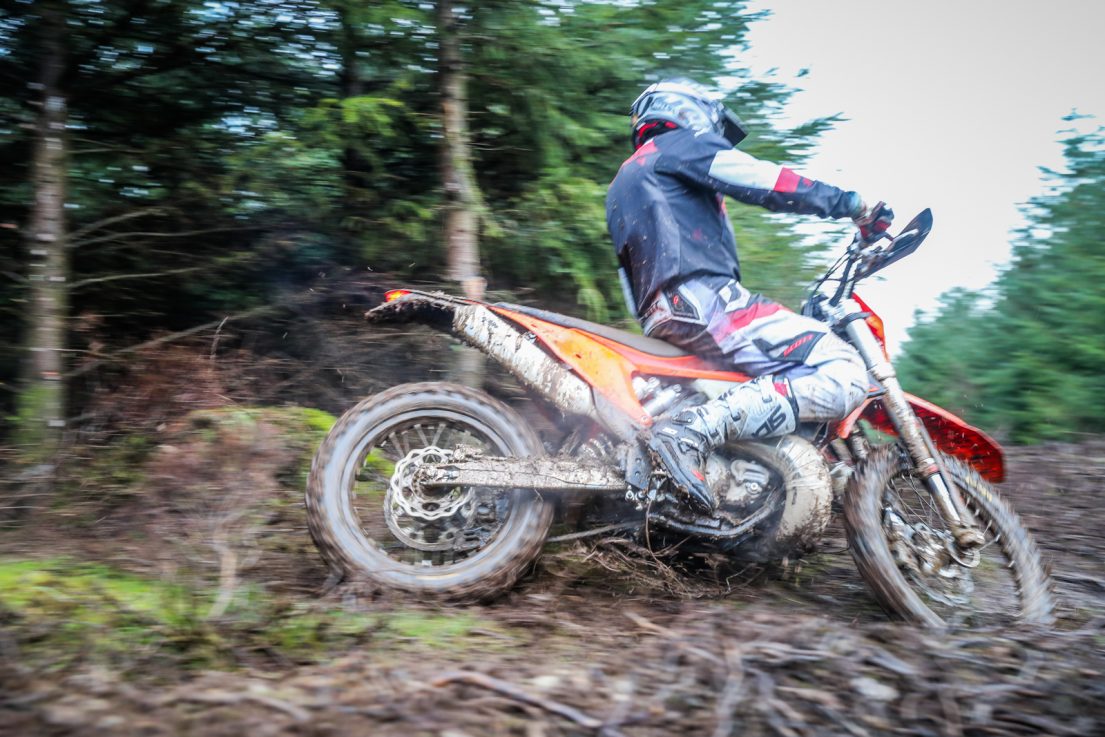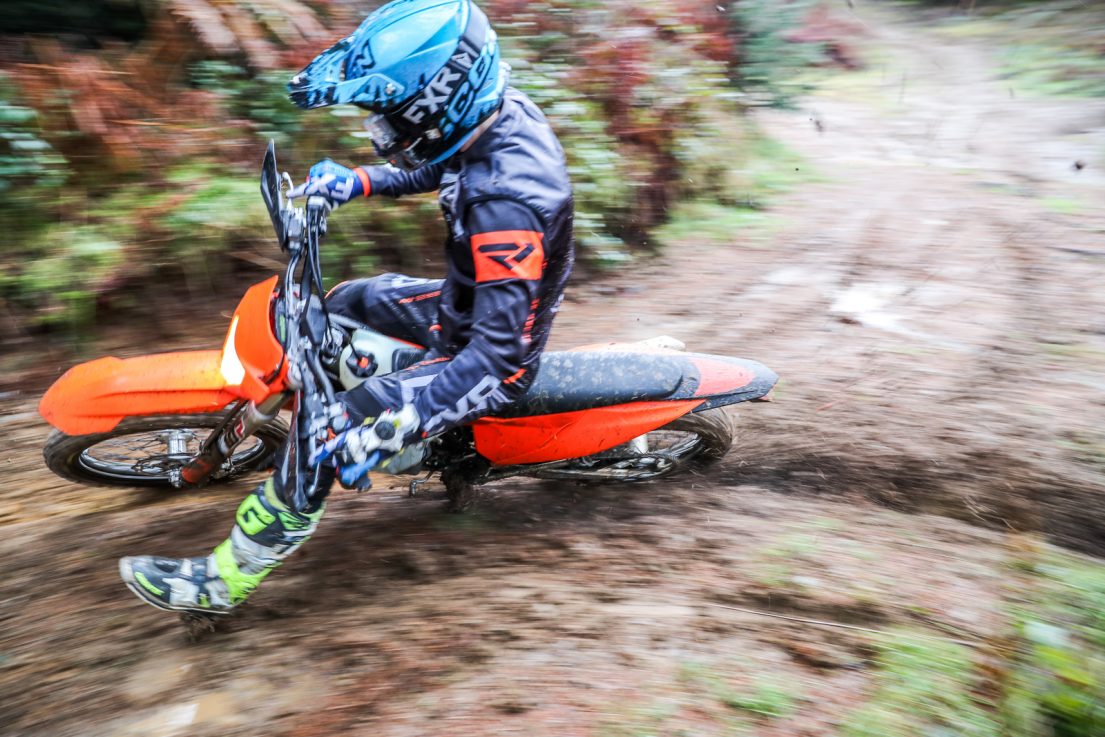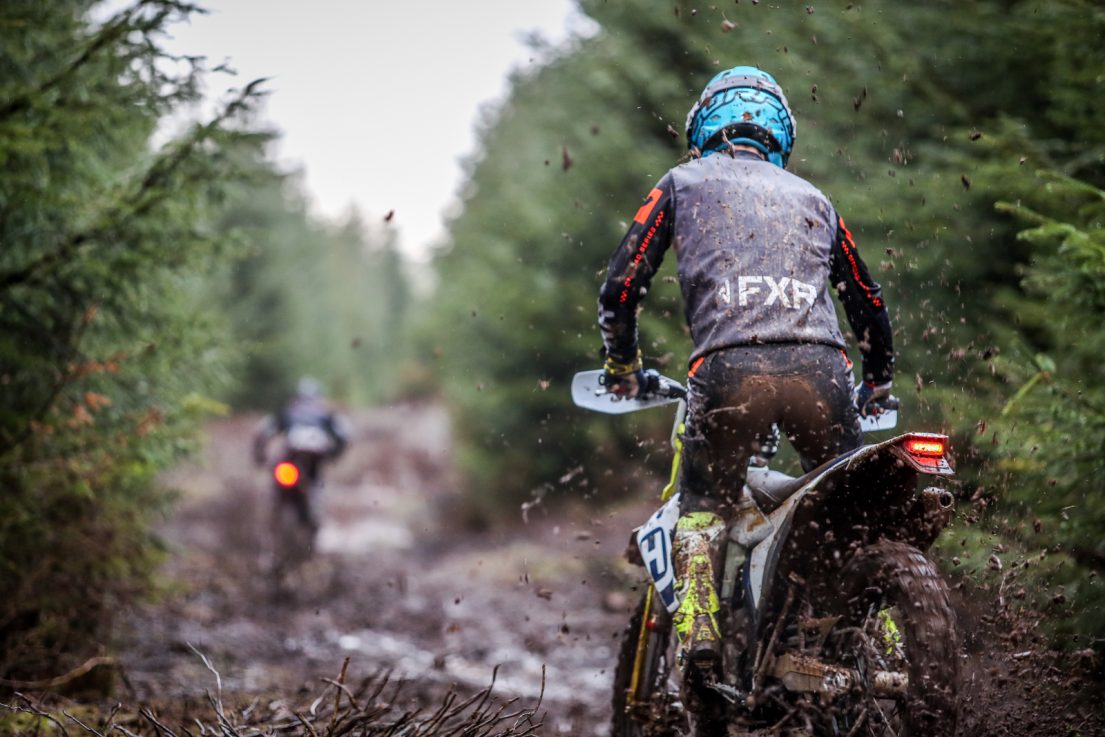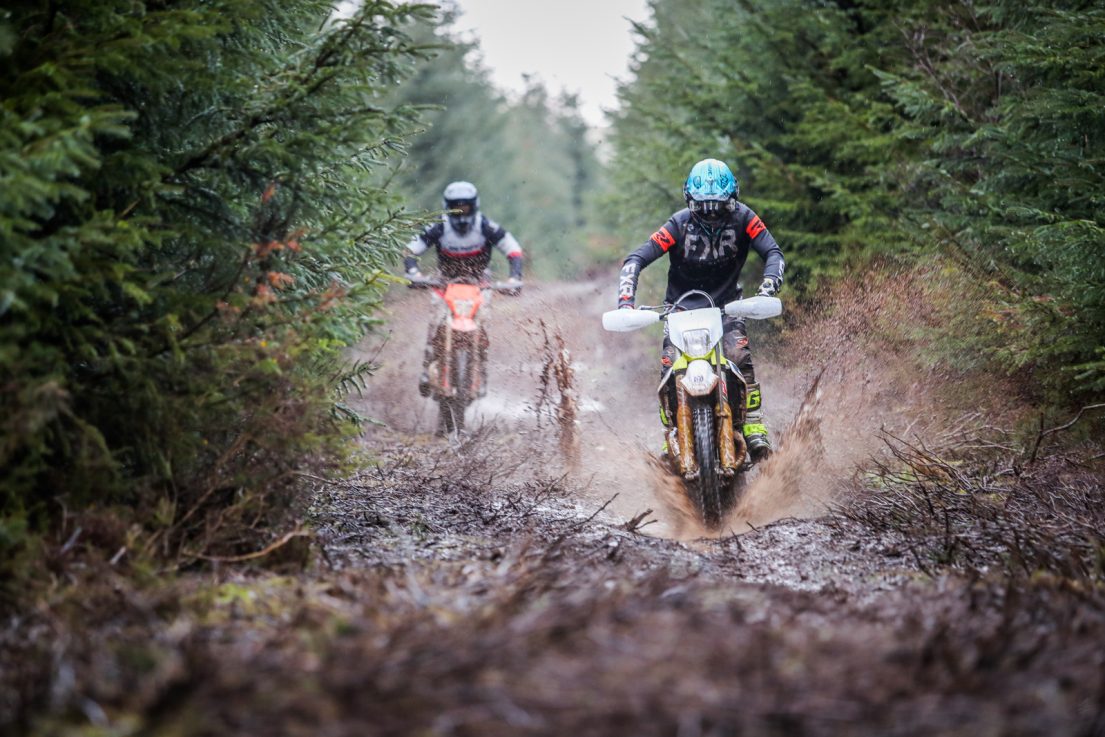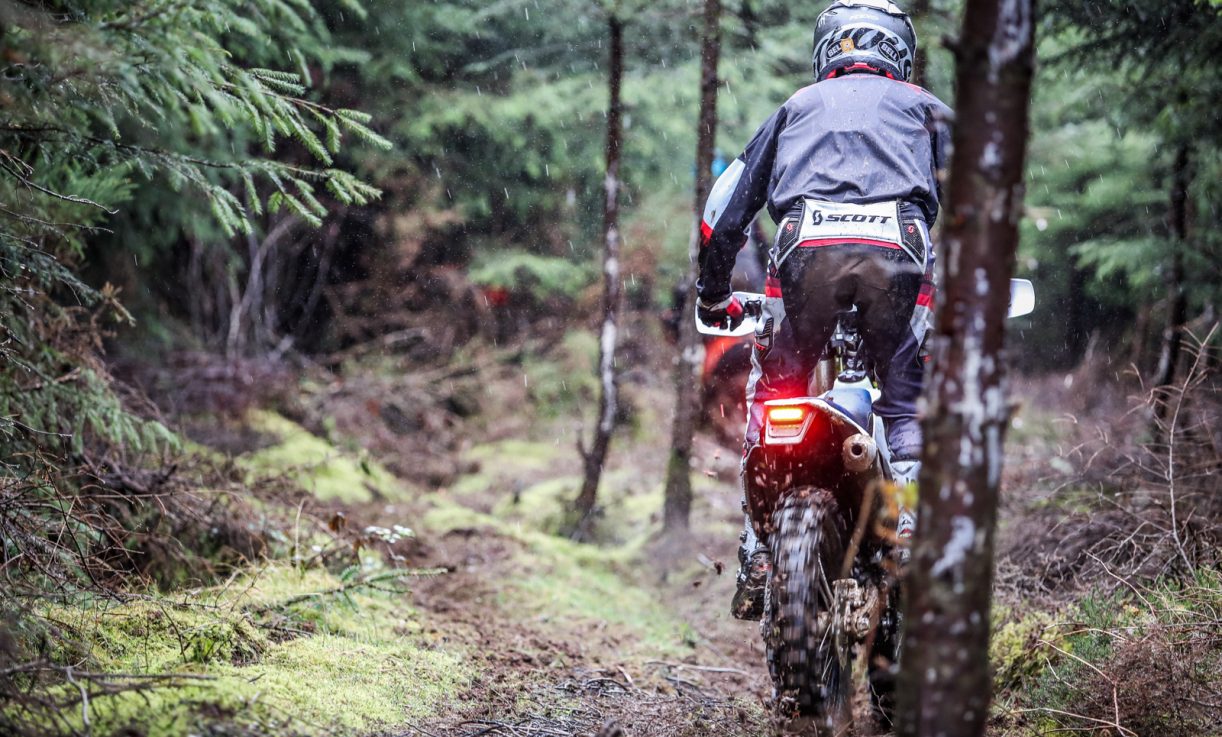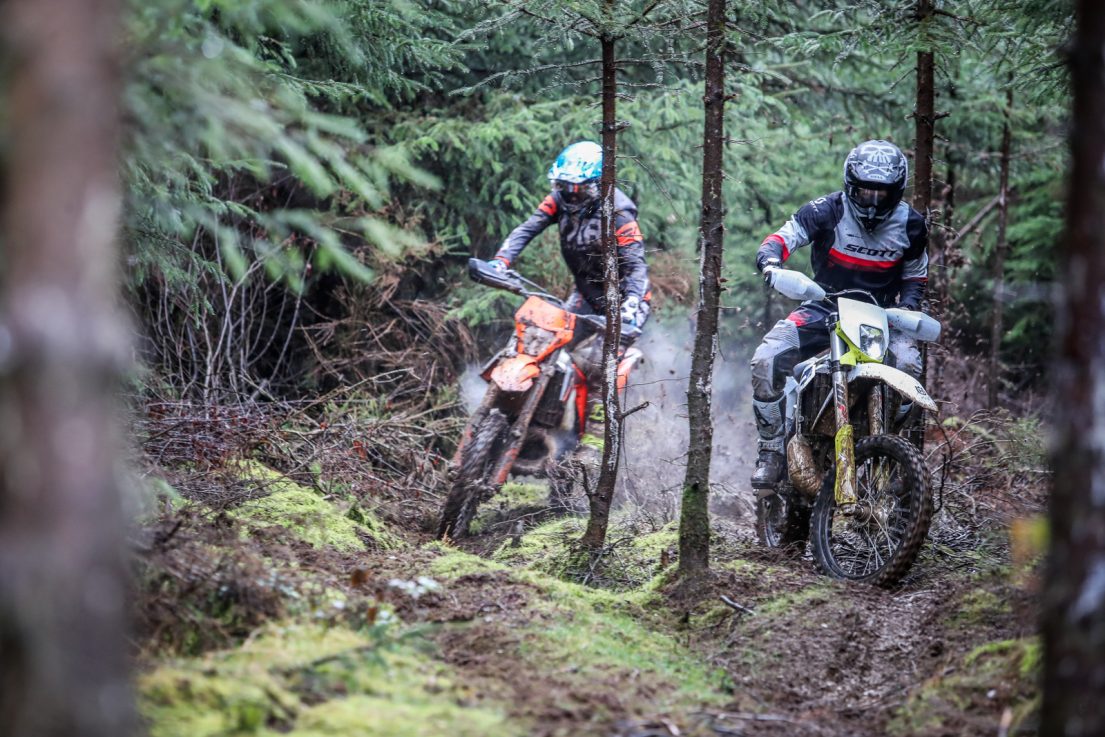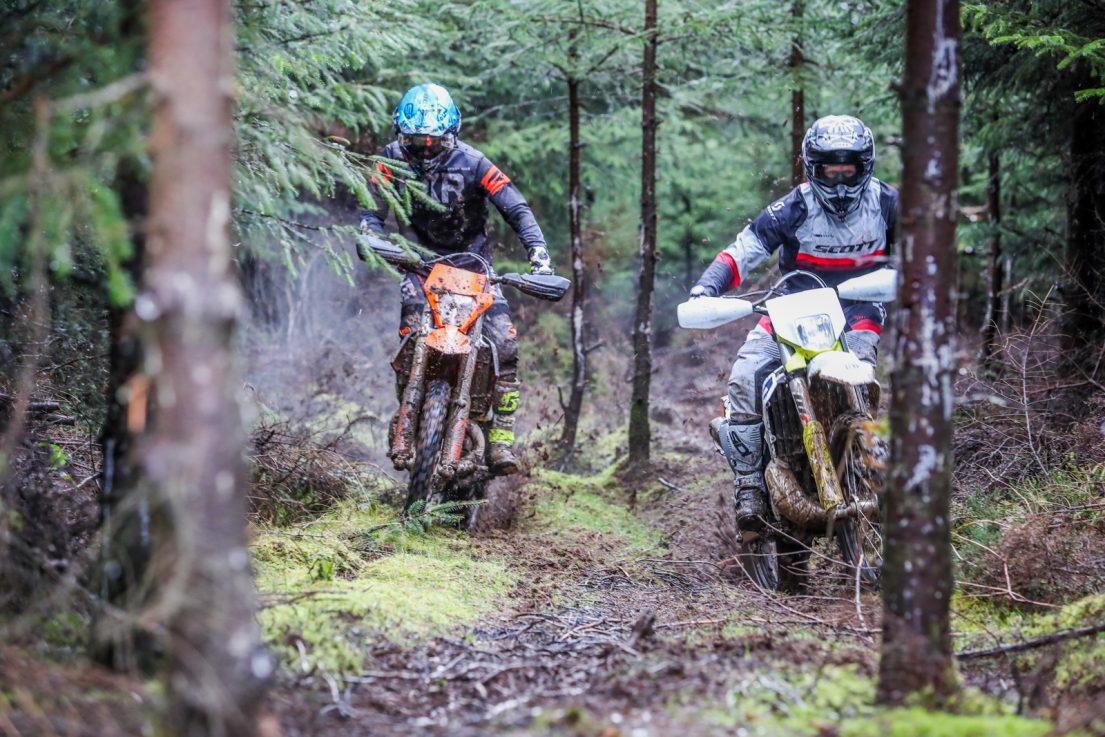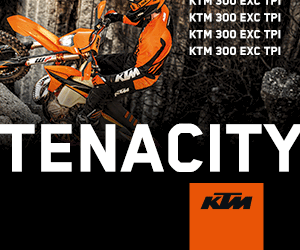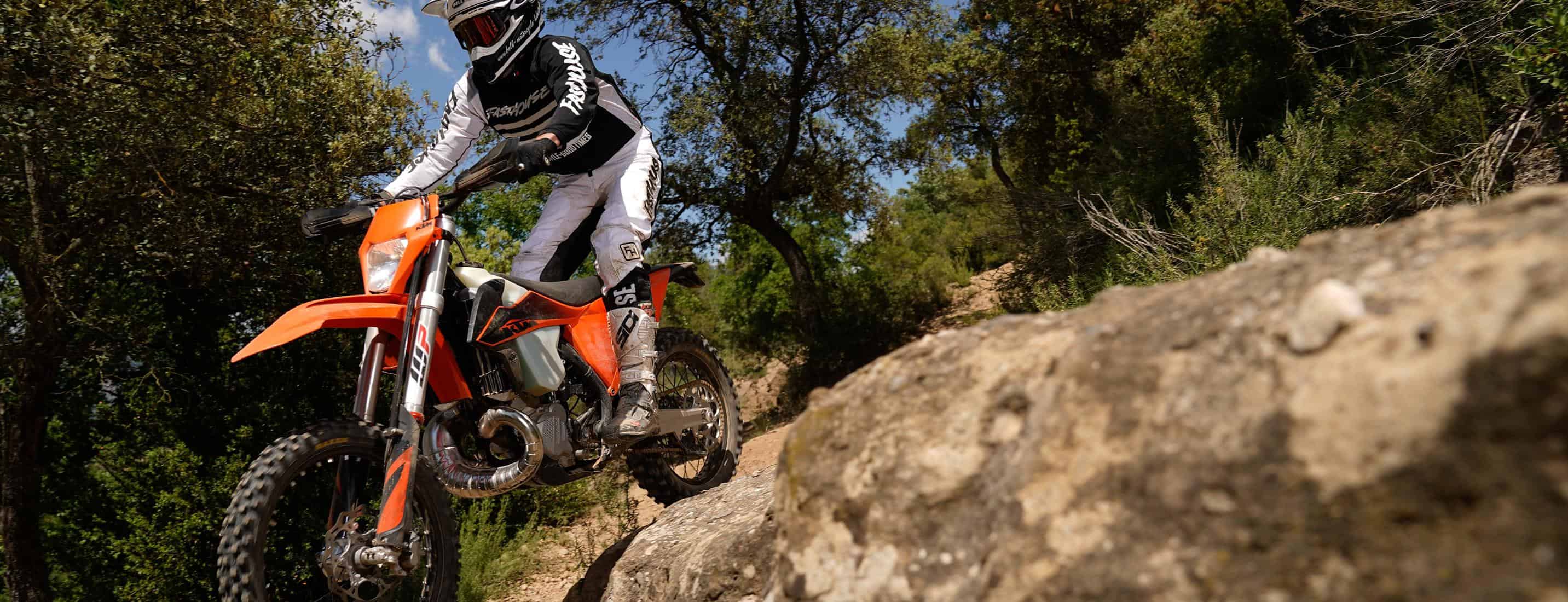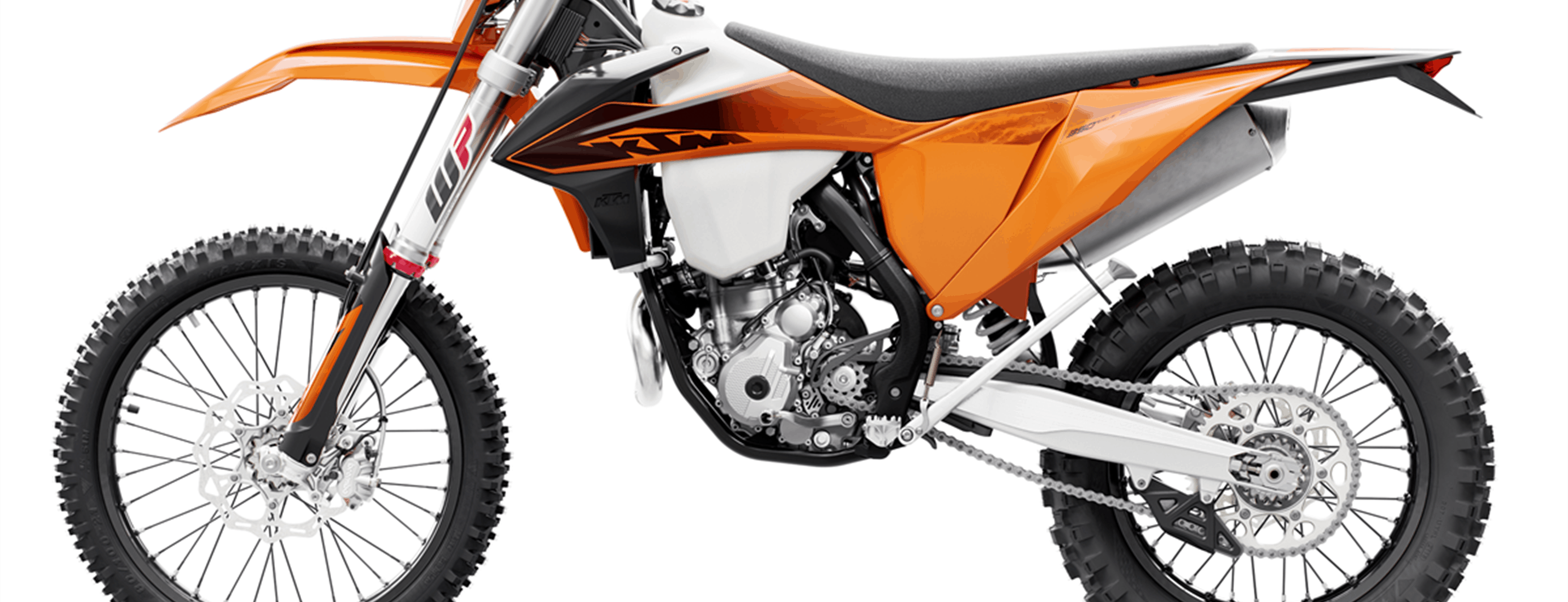KTM and Husqvarna have looked to differentiate their product lines ever since Husky moved to Mattighofen. A suspension linkage and a composite subframe did the trick for a while. But this year Husky has gone further with geometry changes and more. But has it been a step too far? We took the firms’ two 250cc two-stroke enduros and put them back to back to find the differences and see which has the advantage in this sibling rivalry
Back in June 2020 or thereabouts I attended both the 2020 KTM and 2020 Husqvarna enduro range launches. I came away from the KTM launch thinking these were the best enduro bikes ever. I came away from the Husky launch wondering just what had happened. These ranges are based on the same common platform (in terms of engines and to an extent chassis) and yet they were very different to each other, with my assessment being the orange bikes were easily the superior.
Now when I sent JB my review of the 2020 KTMs he published this without question. The review on the Husqvarna range, well, not so much. In fact he promptly refused to publish it! Why? Because as a paid-up member of the Husqvarna fan club I was left not liking the direction that Husqvarna had taken and I was cranky. JB suggested there could be many reasons why I might have been underwhelmed by the Huskies, not least that of location of the launch. He’s ridden launches in Scandinavia before and knows that the tricky forests there – which mix rocks, roots and sand – are not the easiest to like or master, and this can reflect badly on the bikes. I understood where he was coming from but for me I was still of the opinion Husqvarna’s new direction wasn’t for me, so much so that I cancelled my yearly standing order for a brand-new Husky and bought a KTM instead.
2020 REVISITED
Fast forward a fair few months and I’ve allowed myself some time to stop grumbling about my disappointment. JB in the meantime had talked me round me to opt for the smarter option where these concerns arise – make a proper test of the two brands, head-to-head on terrain we know (and love). So for this I chose the models in each range which I felt were most similar, the 250cc fuel injected two-strokes, while JB chose the location – Wales. Albeit a cold and wintery north Wales, as by the time we got this sorted autumn was moving into winter.
JB and I recruited a local young championship-grade enduro rider Alex Walton to come along for the major part of the test (and to style it up for the photos) while I did most of the riding, with JB behind the camera. An icy rain fell for most of the first day and just as you would expect from north Wales the terrain was slow, deep single-track ruts littered with slick roots, wet logs and slick gorse bush – the latter I became intimately acquainted with when the TE spat me off on a run towards to the camera. Murphy’s, eh!? All this was of course very different terrain from what I’d ridden at their respective launches, which was mostly sand and hard pack.
On the second day we joined Geraint Jones’ crew for a day out on their enduro school. Thankfully the sun had come out for that but it was still cold and the ground slick, neither of which dampened the attendance numbers at the enduro school. Martin Lewis, who’s another championship-level rider as well as one of the Jones’ instructors, joined me on this day, and between us we swapped between the KTM and the Husqvarna all day, taking the opportunity to discuss each bike’s performance in the various spots the school uses to help improve their students’ technical skills.
Giving context to the Austrian civil war
KTM and Husqvarna have thrived over the past few years and although the bikes are based on a shared platform they have slowly but successfully differentiated themselves over the years and have each developed their own loyal fan base and unique style. For this year the shared platform is still there, in parts, but the two brands are polarised more than ever before. In my opinion the 2020 bikes have gone as far as they need to decouple themselves. They are very different.
So before we get into this 250 head-to-head we need to look at how the two brands share a platform. As I see it, while KTM and Husky share engine platforms and WP forks that’s about where it starts and ends. Husqvarna’s enduro bikes’ suspension design has adopted the 2019 MX linkage resulting in their frames being vastly different to KTM EXC’s (which of course are PDS equipped). The two bikes also have different clutch hydraulics, different sub-frames, wheels, tyres, handlebars, seats and rear suspension and more besides.
Despite the differences, at the world launches the respective PR departments spat out the same representative 60% ‘changed’ figure for both ranges over the previous models. Coincidence, or were most of the changes made in baseline components? For example: major engine mod’s, updated and improved exhausts systems, frames that are designed to be stiffer in both torsional and longitudinal planes, revamped settings to WP forks, updated Xplor (KTM) and Xact (Husky) shocks, and of course the all new subframes.
You could assume that the changes across the two brands were identical – only you’d be wrong. The changes on the KTM seem more like a collection of subtle tweaks and refinements whereas the Husqvarna’s have taken a big leap in a particular direction.
To me, the 2020 Husqvarna is quite a departure from the 2019 models. Visually, the Husqvarna certainly looks the part of being a new bike – it now resembles its MX and cross-country (TX) counterparts more closely than the EXC seems related to the XC or SX models.
No matter the praise or criticism I’m applying to either of the two 250s, in this review I must give credit where it’s due – if it weren’t for the investment by KTM/Husqvarna in advancing two-stroke technology who knows if we would even be able to be doing this test at all – it’s likely that the only two-strokes would be old ones. I am very thankful for the resurgence of the two-stroke thanks in no small part to tenacity of KTM/HQV in re-establishing the market.
WHAT’S CHANGED AND HOW DOES THIS AFFECT THE FEEL OF EACH BIKE?
KTM’S APPROACH TO DESIGN DEVELOPMENT
The primary development aim at both KTM and Husky has been mass centralisation. The 2017 models did this by way of a shifting of the heaviest rotating masses, such as the crank and clutch shafts, to a more centralised position. R&D in Mattighofen has obviously remained focussed on this goal, and for 2020 they have managed to further develop this theme by lowering the radiators and redesigning the exhaust systems.
Husqvarna’s APPROACH TO DESIGN DEVELOPMENT
According to the Husqvarna, they classify the 2020 models as ‘next-generation’, the target for Husky according to the launch team was to improve ‘rideability’ – by refining the motor and chassis.
It’s apparent that the team at Husky has for 2020 also been tasked with boldly differentiating their bikes from KTM’s. Somehow it now seems more important than ever to quash the ‘white KTM’ stigma. This has resulted in a greater focus by Husky on their aesthetics. Their strap line ‘Pioneering since 1903’ seems to have been taken to heart and aside from the mass centralising work that’s shared with KTM they have really pushed the boat out on their design.
THE SHARED KTM AND HUSKY 250 ENGINES
The 250 two-strokes have for 2020 had a significant amount of engine work done. They get increased compression via a new cylinder head, they feature a twin valve-controlled power valve system combined with the all new 3D stamped waffle-design exhaust pipe and reshaped silencer. The pipes look the business and claims are that they radically alter the performance characteristics of the motor. Besides their look the new design is said to also lower noise and increase strength.
The crankshaft retains the counter-balancer shaft to reduce vibration and by incorporating a heavier ignition rotor it improves traction down low. The 250 engines have also been tilted 1º forward in the frame, which is said to improve the front-to-rear balance and provides more precise feedback on the front-end. The motors apparently also feature improved thermodynamics and updated mapping on both bikes. There’s a new water pump casing that aides cooling by optimizing the flow of coolant.
Both share the updated DDS (Damped Diaphragm Steel) clutch. The DDS clutch design features a damping system that increases both traction and durability. The clutch uses a single diaphragm spring rather than a coil spring design, and so is lighter in the pull. To top off the new 250s’ clutches they feature a new, lighter basket and reworked inner hub that improves oil supply and cooling to the clutch.
The difference between the two clutches is in the hydraulic actuation; the EXC features the Brembo system while TE features the Magura system. I prefer the feel and action of the TE’s Magura hydraulics, the clutch is noticeably softer than the EXC’s action. Conversely, I like the ratchet adjustment on the Brembo clutch lever on the KTM over the star clickers on the Magura lever.
Now while the engines are ostensibly the same, in my opinion they behave rather differently, especially down low. This is less to do with the motor mod’s themselves but rather to do with the sub-frame (and airbox) design and the consequent variation in airflow through to the cylinder inlet ports.
While the motors felt torquier and more refined than the previous model 250s, the power was still very linear and both lacked mid-range punch. The EXC delivered more down low over the TE which was torquey but in a more mellow way than the KTM. This is great in the tight slow stuff but it leaves the entire power delivery of the TE so linear that if you got into trouble I doubt there would be enough punch to get you out of it. The KTM is the same, other than down low where it hints at a little more snap. At his stage I can’t comment on whether this is ECU and/or EMS related or is a power valve adjustment matter – or all the above!
I have my suspicions that replacing or remapping the ECUs would do the trick in livening up these motors considerably. I have read mixed reviews on playing with the power valve settings, but for me I would start with remapping the ECU or fitting say a Vortex X10 ECU (that is when they come available for the 2020 250s) before I start fiddling with the power valve. That said, if cash is tight then the power valve makes a sensible place to start.
My reasoning for starting with the ECU is that fuel injected two-strokes are in their infancy and engine mapping still seems to have a way to go before its optimised. My goal would be to remap the mid-range for a bigger hit. The EXC and TE are both fitted with the Dell ‘Orto 39mm throttle body that has a new idle system and ambient pressure sensor combined with an updated air intake funnel, apparently making it more responsive but, in my mind, it’s hampered by the conservative mapping. Switching between the two maps on the TE, which come as standard, made no noticeable difference.
While I preferred the power delivery on the KTM over the Husky, for novices and weekend trail riders I suspect that the docile power delivery on the TE would be ideal. Faster top-level riders would find both motors too tame for competitive racing and I wonder how many riders now opt for the 300s over the 250s rather than exploring the 250s power upgrade potential because it’s in the ‘too hard’ box. Pricing between the 250s and 300s is also not a stretch, so why bother?
SPEC SHEETS – TRUE/FALSE?
THE KTM FRAME: Central double-cradle, 25CrMo4 chromoly steel
SUBFRAME: Aluminium; 40mm longer with improved rear fender stability.
Ground Clearance: 370mm / 14.6in
Seat Height: 960mm / 37.8in
THE HUSQVARNA FRAME: Central double-cradle, 25CrMo4 chromoly steel
SUBFRAME: Composite carbon fibre subframe; 70% polyamide and 30% carbon fibre, the new 2-piece subframe saves 250g. Increased subframe’s length 50mm.
Ground clearance: 360mm / 14.1in (Claimed)
Seat Height: 950mm / 37.4in (Claimed)
The claimed ground clearance and seat height of the Husqvarna TE250i is complete bollocks! On the TE250i we tested, it was nowhere near these numbers. We measured the KTM and Husky side by side and this is where we landed: the KTM had over 40mm additional ground clearance compared to the Husky. For seat height the Husky was 30mm lower. In mitigation, the Husky was fitted with a skid plate whereas the KTM wasn’t. As for the seat height, well, I could go with sag settings as another mitigating factor but in this case the bike was within standard settings and was not riding low.
I’ll get to the reasons why the Husky is lower than the KTM a little further into the review but these differences do seem to be the crux of the matter. It’s my opinion that this will be the defining factor (in a buyer’s mind) when it comes to choosing which of the two brands to buy. The Husky is the significantly lower bike, there is no getting around it.
And while the Husky may be great for shorter riders, and be pitched as being great in extreme conditions for that reason, my concern is that the lack of ground clearance heightens the chances of getting the footpegs dragging in deep ruts or the linkage catching on logs and bigger rocks, even if the bike’s size is to your liking.
Meanwhile the KTM’s frame doesn’t appear much different to previous models, other than the cool looking black paint. The KTM’s subframe is now 40mm longer and approximately 50% of the chromoly tubing making up the new frame design is revised over the previous model but it retains its previous geometry. Both bikes’ (KTM and Husky) frames have been significantly revised to increase torsional and longitudinal rigidity.
My impression is that the KTM is more versatile in stock form over the Husky. I loved the KTM’s handling in Spain and in Wales, while the Husky performed in Wales but not in Finland.
SUSPENSION
THE KTM 250TPI SUSPENSION:
Suspension balance on KTM’s 250s has always been an issue, the forks and shock picking up chatter in the small stuff and unbalancing the chassis. The effect of this has been heightened by the PDS and for the most part the suspension needed to be revalved and sprung correctly to balance out the suspension.
The 48mm WP Xplor fork for 2020 sees firmer compression dampening settings combined with a softer spring than previous models. According to WP the mid-valve piston helps take the burden off the fork springs to prevent diving under braking. KTM has left the PDS spring rate untouched but has apparently made changes to the internal components, improving the second piston and piston cup that controls the last part of the stroke as they attempt to improve bottoming resistance.
The softer suspension settings on the KTM’s Xplor fork in combination with the PDS Xplor shock work well and complement the stiffer frame, making this the best handling stock 250 that KTM has ever produced. The front-end feel was crisp, precise and more responsive than the Husky, as was straight line stability.
I have been critical about WP in the past but for the first time I am able to say that I could and would race the 250EXC TPI on stock suspension. I felt it steered more precisely, sat up in the stroke at corner entry which gave me confidence to put the front wheel where I wanted, especially coming into deep ruts. It was just as happy being laid over into a fast bermed corner and seemed more resistant to diving than previous models. That irksome harshness on the early part of the stroke that picked up the small chatter was replaced with a plush and sure-footed feel and on the big descents the progression and stiffer dampening kept it from bottoming out.
As well the set up seems to give the KTM a more ground hugging feel. The back-end seems more compliant and the overall suspension balance is excellent. The steering is precise while the backend finds traction and ‘comes around’ helping steer from the rear. This is great in the slalom style riding needed in tight woody terrain, like in Wales. The PDS is efficient and even though we had a good few logs to hop and some slick hard pack with reasonably sized rolling bumps, the PDS coped well enough with all of them. I’d only be wary in the case of high-speed big rough stuff with the PDS, where I would prefer the XC linkage on the back.
The KTM feels high, and it is, particularly in slow going, until the forks are coming under load. The firmer damping makes them sit up a bit and makes the bike feel more aggressive and athletic. I loved it.
THE HUSQVARNA TE 250i SUSPENSION:
The 2020 TE250i has a significantly reworked linkage that extends the steering head rake by almost 1º. That impacts the geometry of the bike drastically and changes the entire ergonomics on the Husky. How? Well, the new linkage results in a reduced swingarm angle that reduces the seat height.
It seems that the design team at Husky was determined to lower the seat. The intention being to give riders greater accessibility to the ground, improve rideability in technical terrain.
That’s all well and good but as we measured it, the seat height and ground clearance was way lower in the front and back than what Husqvarna claimed. Of course, you can address this as a taller rider by putting on a taller seat or altering the linkage pull-rod, or both.
But what about the handling? How does the new seat height and rolling chassis feel as a rider? Well first off, I’m confused; On the KTM I can feel the effect of the stiffer frame working together with the improved suspension balance, but I can’t on the Husky. Apparently the Husky frame is stiffer but the new two-part lighter subframe has more flex ‘to help the shock’ – do these two things cancel each other out?
In Finland I found it hard to get to grips with the Husky’s rear end, it was jittery and felt unstable under braking. The rebound was way too quick and kicked up in the chop, also the rear-end wanted to stand up in tight corners rather than settle comfortably into turns.
In Wales, I had no such issues, other than the suspension being too soft overall, it did work well in the technical slow going. Once I dialled in the compression and slowed the rebound somewhat I found the Husky’s Xact shock worked well and was more stable in a straight line at speed. The slacker head angle seemed to help with the stability but I felt it hindered the bike in tight slalom conditions and was less precise then the KTM.
Have the 2020 KTM and Husqvarana fuel injected 250 two-strokes improved over previous years?
The biggest challenge for KTM/Husky has been to try and make the EFI bikes’ power delivery replicate the feel of a carb fuelled bike. Although these bikes have sold very well it has taken some time for riders to get used to the character of the modern EFI two-stokes. Even now the EFI bike is still a long way from feeing like a carb fuelled bike, but I have no doubt that the dedicated R&D department at Mattighofen will get there and be able to produce maps to suit both what both pro racers and trail-riders demand.
But do the 2020 fuel inject two-strokes show any improvement? I think they do. Here’s why. The fuel injection feels crisper and more refined than previous models. Starting both bikes was a cinch and neither showed any signs of bogging. The throttle response was clean and immediate throughout the rev range, and the EMS was so precise that I wished it wasn’t – the fuel-air delivery makes these fuel injected 250s so predictable. I would like both brands (especially Husqvarna) to make the engine mapping a little more aggressive, they would sell more 250s I think.
Don’t misunderstand me, there is nothing wrong with the 250s as is and 80% of riders are going to be more than happy with them stock, but if you want to race these bikes competitively they could do with more power, akin to the power of a carb 250.
For better or for worse? EXC or TE?
Firstly, is one bike inherently better than the other? The answer is, no. However, out of the crate is one of the 250s better than the other for racing? Hell, yes. Are they both expensive, good god yes. So to recap…
Husky TE250i
I’m disappointed, this bike is too small for me, it’s like riding an 85cc as grown-up. I don’t like it. I land up being way too forward over the front wheel when I’m standing. When seated I’m struggling to find where to put my legs, which pushes me off my centre position on the bike and too far back on the seat – so much for centralising mass.
It doesn’t end there; the rake, steering head angle and swingarm angle have changed along with the new linkage design, and I don’t like the changes. Their new setup just doesn’t suit me. I’ve thought long and hard about the changes Husky has made and I suspect that I don’t like them because I’ve lost the feeling of familiarity with my beloved Husky brand, this bike is that different to previous years.
That said, the changes seem to have balanced the suspension out and improved the overall collaboration between the forks and the shock. This bike is going to suit smaller riders. I can’t assess how hard it is for smaller riders to cope with tall bikes but now I have a better idea having ridden a bike that’s too small for me. The Husky for these riders is likely to fit like a glove and for the right size pilot this is going to be a cracking machine. The lower seat height is going to make technical riding loads easier and that combined with a more balanced suspension set-up makes the Husky more stable and nimbler in equal measure. These are all to the good but somehow it seems like the Husky is more suited in stock form to weekend trail riding.
KTM EXC 250TPI
I like it. KTM has focussed on the bikes’ handling and reliability. A new appearance seems to have been less important to them. This results in a subtler series of bodywork changes. The changes are improvements and have all been for the better.
This is the better race bike of the two, it’s the more athletic, it’s slim, lithe and more precise than the TE. The motor is less constricted and feels the more aggressive. I’d confidently race the 250EXC TPI in stock trim, although I would ultimately try and get some mid-range punch from somewhere.
I loved the chassis and suspension performance in tighter terrain and found that I could run the 250EXC TPI in a higher gear than the TE250i over the same terrain. It’s just a matter of getting used to the power characteristics of the fuel injection. I seldom used first gear, second gear is great but the gap to third is a little too wide, (even more so on the Husky) – I’m sure the two bikes run the same transmission but the fuelling makes the KTM punchier down low and this influences which gear you’re able to select.
I’m left wondering what the KTM XC or Husqvarna TX gearing is like in comparison to these two. Would the extra power and closer ratio gearing and still having a sixth gear make them better? I’m going to go on the hunt for one or both to ride and see… watch this space.
EFI or Carburettor?
So there’s the million dollar question. Would I buy either of these two fuel injected 250s over a carburetted bike? Yes, I would, even though I like the braaaap of the carburettor. Who wants to be bothering with pre-mix and frequent refuels? Those days are gone.
And the Winner is…
It was worth the re-test. I still found the Husky to be wanting, but in having the KTM alongside I could support my opinions more convincingly. Yes, the Finnish launch didn’t help the Husky, but it’s still not quite the bike the KTM is. It might suit certain riders better, but as a consequence it’ll suit other riders, like myself, less. The KTM 250EXC TPI, though, seems to have that universal correctness and so is the better bike here, and probably for the primary reason that I could race this bike stock competitively for an entire season – something I don’t think I could do on the Husqvarna TE250i.

